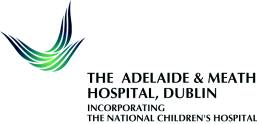
AMNCH – CASE STUDY
Who are they?
Adelaide and Meath National Children’s Hospital (AMNCH) is often called Tallaght hospital as it is located in Tallaght, West Dublin. The hospital is an acute care university hospital under the leadership of Chief Executive Michael Lyons.
No of employee’s approximately 3,200 whole and part-time staff
Business Sector Health
Location Dublin, Ireland
What part of the organisation was chosen for this project?
For this project, the target group were staff from the Operating Theatre Department, consisting of a 154 participants. They were divided into three – nursing staff, medical staff and ‘others’.
Why were this group involved?
The theatre is seen as a stand-alone unit and local staff and management there believed that using the Management Standards and Work Positive would provide a focus for employees in terms of profiling the work unit compared to other health settings. The team work interdependently and so it should be appropriate for the specific tool. Senior hospital management expressed the view that it was a positive step to use the Risk Assessment in line with the HSA, to tackle absences and improve control measures of known workplace hazards, using the theatre as a pilot site within the broader hospital.
How did they set about carrying out the Risk Assessment (from now on referred to as Work Positive)?
Stage one: a meeting was set up with the HSA Psychologist and Maria Campbell, the Health Promotion Officer at AMNCH, as well as other stakeholders – Deputy CEO John O’Connell, Human Resource Manager, Health & Safety Manager, Occupational Health and Theatre Management. At this initial meeting in early September 2008, the working patterns of the unit were discussed, the different staff groupings were agreed, a plan was outlined, time line set out (Sept 08 – May 09) , potential actions suggested and possible outcomes explained. Staff was then consulted internally to get commitment. Once this was satisfied, posters and fliers were made visible in the coffee and leisure areas around the theatre so that staff would become more familiar with the Work Positive system and the intention to carry it out. Questionnaires were then printed, categories set out (3 in total) and they were distributed by the HPO.
What happened next?
Stage two: the questionnaires were collected, indicating a return rate of 55%. The returned questionnaires were analysed by the HSA on behalf of the AMNCH using the newest (Nov 2008) UK organisational norms for the HSE Management Standards. Findings were then categorised for three groups – medics, nursing staff and ‘others’. Differences in the findings were noted and suggested interventions outlined on short PowerPoint presentation slides.
How were the findings fed back?
Stage three: involved hosting a meeting with the hospital deputy CEO, the OH physician, theatre manager, HR manager, HPO and HSA Psychologist where results were explained and compared to other current results. Suggested rationales were discussed and next steps negotiated. Then feedback sessions were arranged with the theatre manager for all staff. This was done throughout a morning from 8 am through to 1 pm, with half hour sessions run back to back so that staff could receive the results to fit in with their work schedule. Results were explained in the context of the work environment. Results were explained as potential hazards, not as direct causes of stress. Letters were also disseminated with the results for those not present on that day.
Was that the entire project completed?
No. At this stage, the Risk Assessment was completed and fed back. The next phase is the Control Measures, which involves reacting to the results of the audit in Actions.
What were the Actions?
1. Different follow-up actions were needed.
Stress Management sessions were delivered to participants. These were facilitated by the independent consultant to the health sector (details under ‘professionals consulted for project) These sessions occurred in January, and March 2009.
2. A further questionnaire was required to find out further what the medic group’s stress levels were – the Maslach Burnout Inventory was chosen and the medic group divided into 4 specialists. They were then given the questionnaire to fill-out (16 items) and hand back to the HPO and get analysed by HSA.
3. Consultant-led education sessions on Control were held. Dealing with the low perceived control levels in many health settings and issues around decision-making in safety critical areas with low control.
What worked well?
‘Although it was challenging to get staff to participate in the project, the fact that they could see that such a project was taking place in their workplace had a positive impact in itself, though this effect would be hard to measure scientifically’.
What was the main challenge to the success of Work Positive?
Lack of ring-fenced time dedicated to all different participants/staff in order to complete the questionnaire and then attend further sessions. However, this is due to service needs of the unit which marks it out as a difficult setting for projects such as this.
Is there any other support the Authority could give organisations to improve psychosocial risk assessments?
‘For this to be sustained, the HSA should offer training to staff in organisations who are involved in employee wellbeing insofar as how to use the tool and how to market it to all new and existing staff so that they know the assessment will be part of their work so that they expect the survey process and are comfortable with it.’
What is the overall outcome of participation in the project?
The theatre has an up to date risk assessment done, records kept, all staff have increased self and environmental awareness, group’s sessions were held and staff were involved. The medic group were further analysed to assess levels of WRS among that group (as it is a transient high pressure area) to inform interventions for new recruits to that area (NCHD)